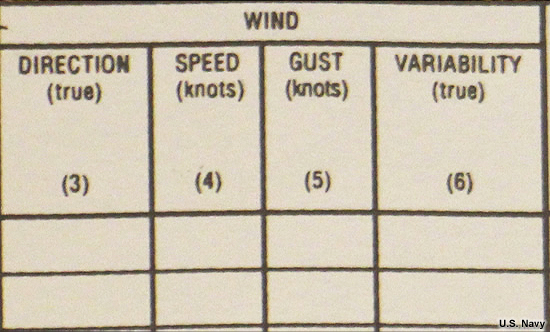Encoding Wind Speed and Direction
Once you have determined the true wind, you need to encode it.
Enter the true direction from which the wind is blowing, to the nearest 10 degrees. Directions less than 100 degrees should be preceded with a zero (i.e., easterlies shall be coded as 090).

Enter the wind speed in whole knots using tens and units (i.e., 18 knots). When the wind speed is greater than or equal to 100 knots, enter three digits for the observed wind speed (i.e., 110 knots).
When wind is calm, enter "000" for no wind direction and "00" for no wind speed.
If wind direction varies by 60 degrees or more and the wind speed is 6 kts or less, enter the contraction VRB. If wind direction varies by 60 degrees or more and the wind speed is greater than 6 kts, report the 2-minute mean direction.
Use "G" to signify gust and "Q" to signify squall and encode them with the peak speeds observed in the 10-minute period prior to the actual time of observation. When gusts are reported, there must be at least a 5-knot difference between the gust speed and the reported wind speed.